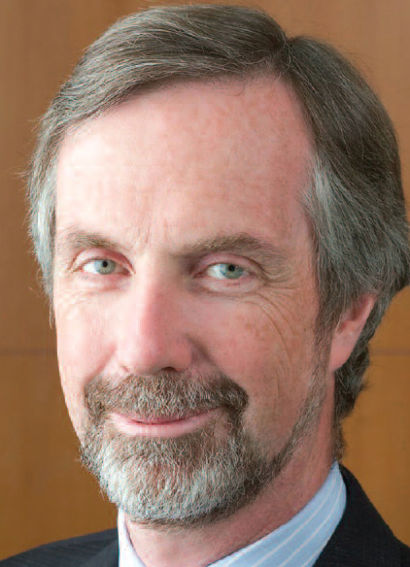BRITAIN’S next high-speed line—HS2 from London to the West Midlands and beyond—could be running within 15 years at a top speed of 250 mph, twice the maximum speed now allowed on conventional tracks.
Details of the future specification were given to the Derby and Derbyshire Rail Forum by Professor Andrew McNaughton, chief engineer of the High Speed 2 company, set up by the Government to develop plans for the new line.
With such a high top speed, he said, there could be no tunnels and few curves. Aerodynamic forces would increase tunnel costs tenfold, and while the minimum radius for curves on the 125mph East Coast Main Line was 1,800 metres, at 250 mph the minimum radius on a new route would have to be 7,200 metres.
But double-deck high speed trains with 12,000 installed horse power would be able to climb much steeper gradients than ‘classic’ trains—3.5 per cent, compared with only 0.5 per cent grades on conventional lines. He explained: “High speed rail is not invisible. You cannot hide it.”
Although Prof McNaughton did not specifically mention the Chilterns, it is clear that a major challenge for the planners in finding a suitable route from London to the West Midlands will be how to cross these hills, which in places are designated areas of outstanding national beauty.
Greenguage 21, the pressure group that originally proposed a new line from London to the West Midlands, has suggested a route that would take the line in tunnels under High Wycombe. But this plan envisaged a top speed of only 300 km/h, as adopted for HS1, the Channel Tunnel Rail Link.
But Prof McNaughton said that with new rail technologies 350-360 km/h was already becoming standard. And in countries such as France and Spain new lines were now being planned or built for a maximum of 400 km/h.
“We are playing catch-up now,” he said. “So any new line in Britain should aim to cope with a service speed of 400 km/h — that is 250 mph, half the speed of an aeroplane.”
He gave no hint of any preferred route, but said a proposal for public consultation would definitely be published “before midnight on 31 December.”
A new line would take at least 15 years—seven years for planning and authorisation and eight years to construct as far as the West Midlands.
‘DETERMINED IT WILL BE BUILT’
“But we are determined it will get built,” he added.
Work could start as the Crossrail and Thameslink projects are completed in 2016-17 — retaining skills and jobs, and transferring the annual public budget for Crossrail/Thameslink to HS2, with stage 1 completion in 2022-24.
He said the HS2 company was focusing on the London-West Midlands-North West corridor “which is going to run out of capacity—both on the railways and on the motorways—by 2025.”
The population densities of Greater London, West Midlands, West Yorkshire/Greater Manchester/Merseyside and Strathclyde were ideal for very high speed operations judged against Continental experience.
He likened the corridor to the Paris-Brussells route where rail’s market share had more than doubled since introduction of 300 km/h high-speed Thalys trains. Airline competition had been eliminated, and rail had also eaten into the road market.
Prof McNaughton said HS2 would free up capacity on the existing West Coast Main Line, particularly at the southern end to enable more housing and economic growth around Milton Keynes and in Northamptonshire and Bedfordshire.
The new line would also relieve “suppressed capacity” for more freight trains.
He added that there was as much a business case for releasing capacity on the WCML for more freight and commuter services as there was for a London-Manchester journey time of only 75 minutes.
But the new line’s ‘green credentials’ would depend very much on Government decisions about future electricity generating policies and what fuels were to be used, he said.
With a much larger loading gauge (height and width), the route could carry duplex trains, 400 metres long, compared with a maximum length allowed in Britain now of only 245 metres.
Each train would have 1,100 seats and there would be a train every four minutes, giving 16,500 seats each way per hour—about three times more than Virgin can offer now in a peak hour with 12 x 9-car simplex Pendolinos and one 2 x 4 car Voyager.
With such long trains, many existing stations would be unsuitable, and Prof McNaughton added: “Trying to find a site for a London station is proving something of a challenge.”
Parkway stations along the route would also be important to compete with private car travel and to attract sufficient passengers to justify the project. But the number of stations would have to carefully limited so as not to lose the benefits of high speeds.
“High speed rail is transformational. It is a new transport mode, not just faster rail,” Prof McNaughton emphasised.
He added that magnetic levitation was not being considered because of its high costs and the inability of maglev trains to continue onto ‘classic’ lines.
250 mph plan for High Speed Two
1st June 2009


